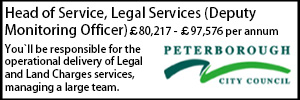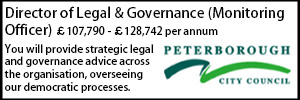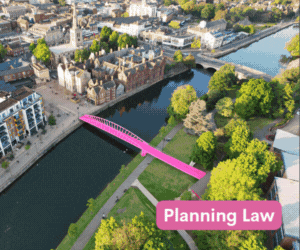Proposed planning reforms will trigger more appeals and speculative applications, council warns
Shropshire Council has claimed the Government's proposed changes to the National Planning Policy Framework (NPPF) could see an increase in the number of speculative applications by housing developers and more decision appeals.
- Details
Writing in a draft response to the Government's NPPF consultation, the unitary authority also said the suggested definition for 'grey belt' land is "confusing".
In its consultation launched last month, the Government revealed a list of proposed changes to the NPPF, a new standard methodology for calculating housing need, alongside the reintroduction of mandatory housing targets, the inclusion of 'grey belt' land and the requirement for councils to conduct green belt reviews where they are not meeting their housing targets.
The policy changes are aimed at achieving the Government's target of building 1.5m new homes by 2029 and will see housing targets for the majority of councils rise.
In Shropshire, the new standard methodology would see the council's housing need increase from 1,070 new homes per year to 2,059 a year, a figure that the council has never delivered.
Shropshire's cabinet is set to consider an officer's report on Wednesday (11 September), which details the council's draft response to the consultation.
The report highlights "very significant concerns" regarding the new standard methodology.
It added: "Clearly this is of great significance, and if implemented would have significant implications on future Local Plan review preparation, not least on the need for additional supporting infrastructure, the impact this would have on the local character, and the potential unsustainable impact on existing settlements."
It also suggested that the changes run the significant risk of undermining the plan-led system.
"For instance, whilst the principle of the need for councils to maintain a deliverable supply of land is supported, there are concerns the transitional arrangements proposed leave potentially unhelpful and counterproductive outcomes," the report said.
"As such, it is proposed to raise very significant concerns as it is felt this approach seeks to unduly penalise an authority actively working towards a new Local Plan adoption."
Elsewhere, the council raised concerns about the definition of grey belt, suggesting that it "is confusing as it appears to extend beyond only previously developed land (PDL) to also include areas of which do not strongly perform against the purposes of Green Belt (the two are often very different in practice)".
It added: "As such the council's response advocates the definition of Grey Belt being restricted to only include PDL and for this to apply consistently throughout the document, whilst also removing some vague and potentially opaque statements regarding the circumstances where Grey Belt land may be appropriate to develop."
The consultation document defines grey belt as: "Land in the Green Belt comprising Previously Developed Land and any other parcels and/or areas of Green Belt land that make a limited contribution to the five Green Belt purposes."
The council meanwhile noted "general support" for the principle of reviewing green belt boundaries and the idea that brownfield development is acceptable in principle within existing settlements, and potentially acceptable in other locations subject to further considerations.
It also voiced support for the proposed 'golden rule' that all development in the green belt or resulting from the green belt release is subject to 50% affordable housing and provides benefits for nature and public access to green space.
However, the council recommended the viability considerations resulting in a reduction to affordable housing levels "only apply in exceptional circumstances and greater certainty is provided that such proposals result in greater benefits for nature and public access to green space than other such development".
Commenting on the proposals, Cllr Chris Schofield, Shropshire Council’s Cabinet member for planning and regulatory services, said: “While there are good points in the proposals to help boost growth, there is a real concern about how housing need has been calculated and how achievable a target 1,000 homes a year higher is, when at best we achieve about 25% below this figure.
“Many town and parish councils in Shropshire already have Neighbourhood or Parish Plans or are committed to producing one. The draft NPPF risks superseding such plans, brushing aside the hard work, expertise, and expense that has already been invested.
“We want to support growth but this can’t be done by riding roughshod over local needs and views. We want to ensure that the proposed changes to the NPPF and associated planning system reforms benefit local communities and support sustainable development in the region.”
Adam Carey
Trust Solicitor (Employment & Contract Law)
Contracts & Procurement Lawyer
Senior Lawyer - Contracts & Commercial
Lawyer - Property
Locums
Poll









































